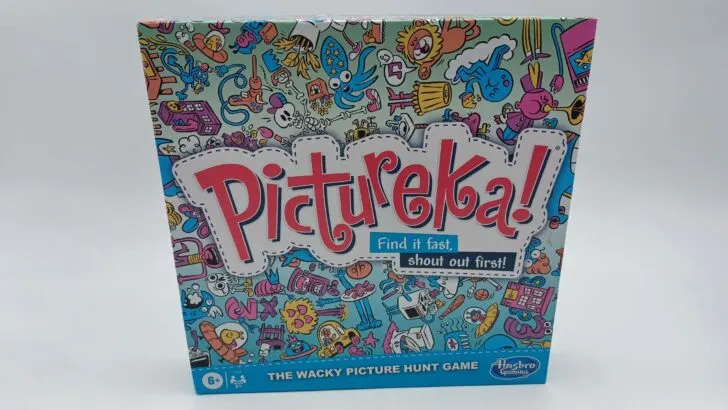Several versions of Pictureka! have been released over the years. This how to play guide explains how to play all versions of the game. The rules have mostly stayed the same, but there have been a few changes. In particular the second edition of the game changed a few rules. The newest version returned to the rules from the original edition. If you have the second edition of the game (2009-2014) you should check out the corresponding section for the rules that differ from the other versions.
Looking for a specific Pictureka! rule?: | Setup | Playing the Game | Green Cards | Blue Cards | Red Cards | Winning the Game | Variant Games | Second Edition Changes | FAQ | Components |
Objective
The objective of Pictureka! is to be the first player to collect six cards.
Setup
- Randomly place the nine game tiles in a 3 x 3 grid. You can place either side of each tile face up.
- Sort the cards by their colors. Shuffle each color separately, and place the piles facedown near the game tiles.
- In some editions of the game, there are multiple options printed on each card. The players should agree before they start playing which option (top, middle, bottom) they will use during the game.
- Give each player a reference card so they have a quick rules reminder.
- The youngest player starts the game. Play moves left/clockwise throughout the game.
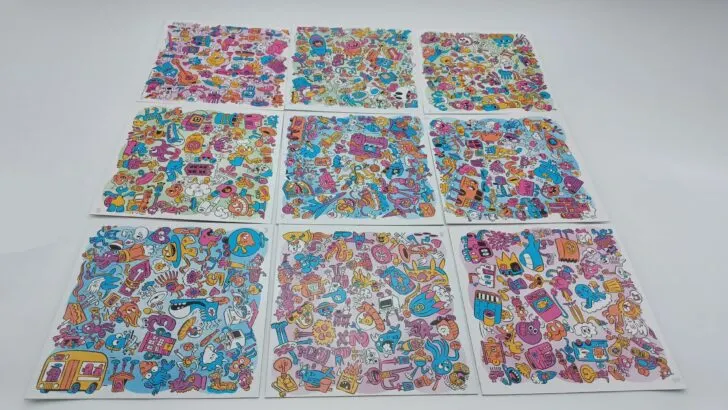
How to Play Pictureka!
You will begin each of your turns rolling the die. The color you roll on the die determines what color card you will play on your turn.

Take a card from the deck corresponding to the color your rolled. Before you look at the card, check to see if there is a symbol on the back of the card. There are three symbols in the game which require you to take a special action.
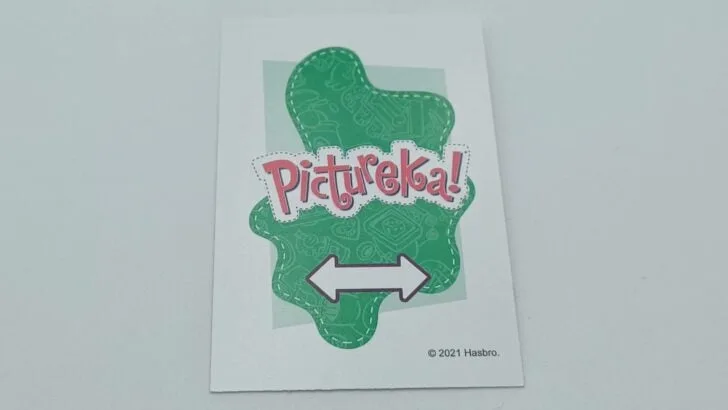
If the card has the Switch symbol, you will choose two of the game tiles and swap their positions.
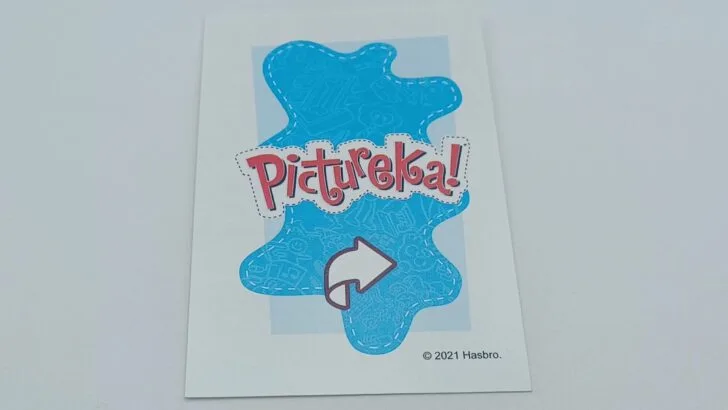
When a card has the Flip symbol, choose one tile to flip over to the other side.
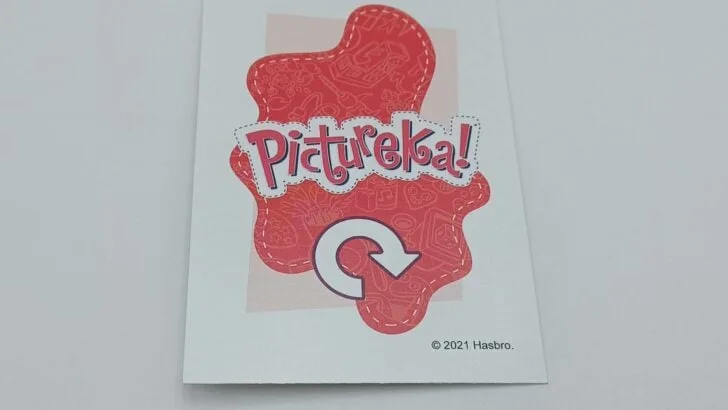
Should the card have the Rotate symbol, choose one tile to rotate.
After you have dealt with any potential special symbols, you will turn order the card you drew to find out what mission you need to complete on your turn. Each color of card gives you a different kind of mission that you have to complete.
Green Cards
When you play a green card, you will play it by yourself.
Read the card out loud. The card will describe a thing that you need to find on the game tiles. Then roll the die. The number you roll on the die determines how many of the described objects you need to find on the game tiles. You will have until the timer runs out (30 seconds) in order to find the corresponding number of objects.
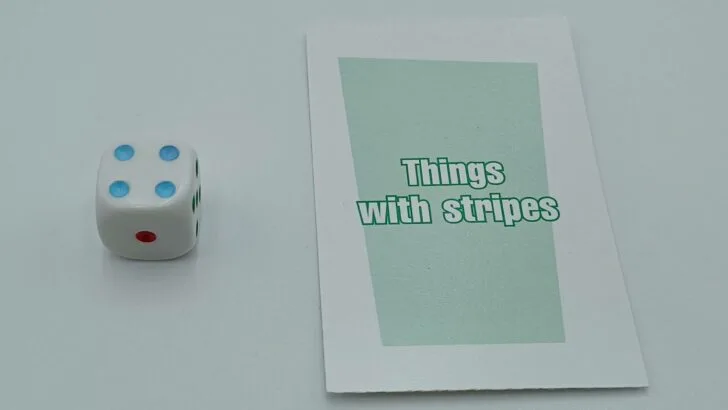
When you are ready you will flip over the timer. You will then try to find the objects on the game tiles. Whenever you see one, you will point it out to the other players. Someone should keep track of how many you have found.
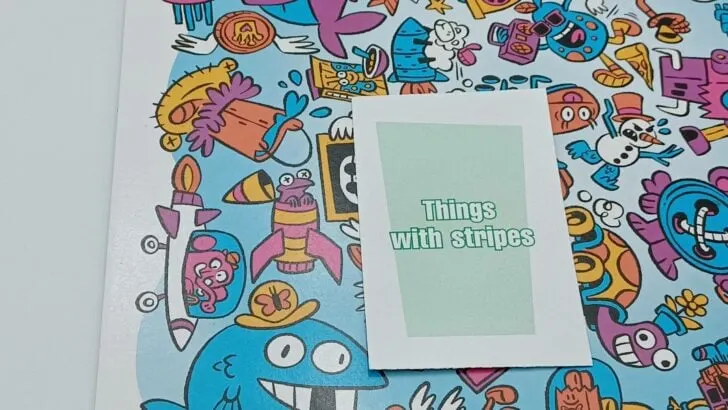
When the timer runs out you will compare the number of objects you found versus the number you needed to find based on the number you rolled.
If you found the number you rolled or more, you win the card. Place the card in front of you.
If you did not find enough objects, you will return the card to the bottom of the green deck.
Blue Cards
In rounds that a blue card is drawn, all of the players will play.
Flip over the card you drew. On the card an object/creature/etc is pictured. This object will appear exactly once on one of the nine game tiles. The goal of this round is to be the first player to find the pictured object.
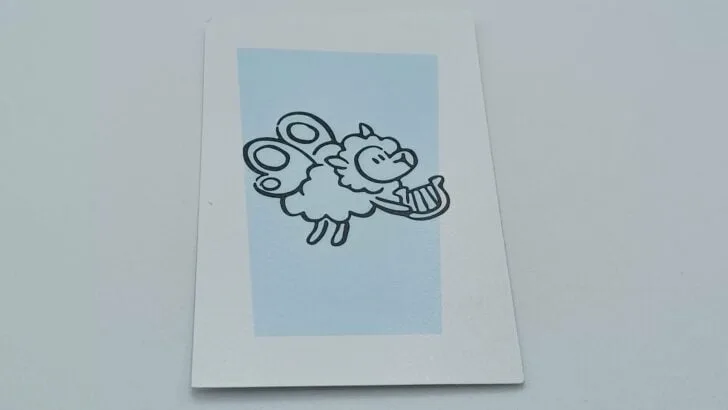
After the card is revealed all of the players will search the game tiles at the same time. The first player to find the object shouts out “Pictureka!” and points to the object on one of the game tiles. If they correctly found the object, they will take the card and place it in front of themselves.
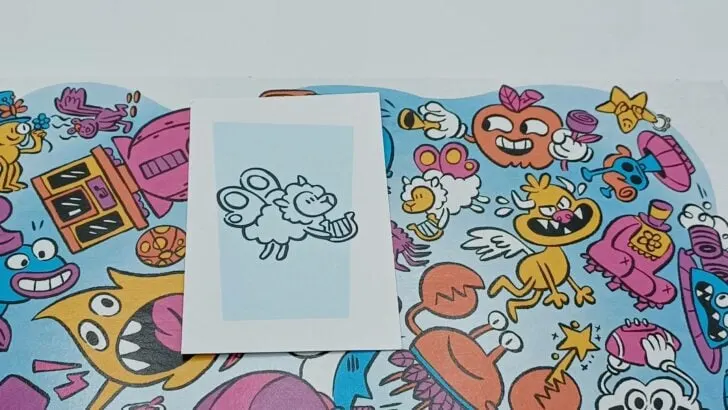
Red Cards
For red card rounds you will not flip over the card at first. In this round the players will bid to see who gets to play the round.
Starting with the player that drew the card, the players will bid how many of the objects from the card they can find in 30 seconds. The players will take turns either raising the bid, or passing.
When only one player remains, they will get to play the round. They will flip over the card to see what they need to find. They will have to find at least as many of the object as they bid before the timer runs out.
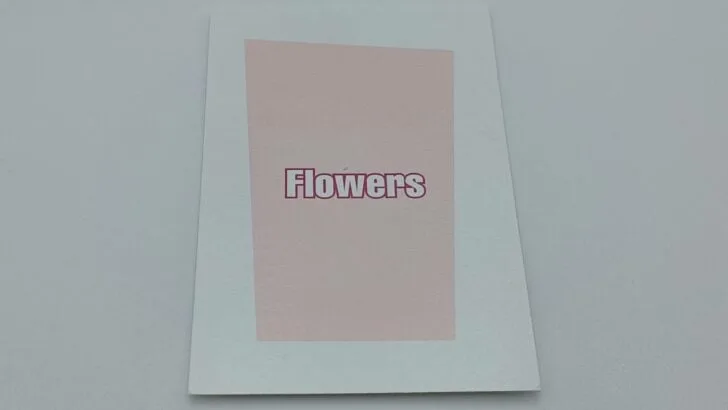
Flip over the timer. The player then points out each matching object they can find on the game tiles.
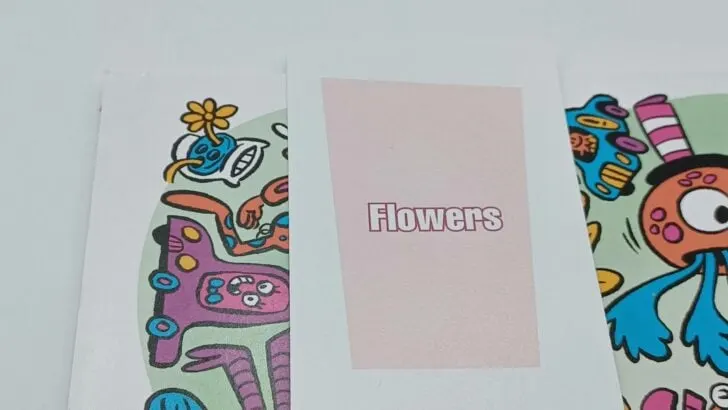
If they find at least as many objects as they bid, they win the card. They will set it in front of themselves.
If they do not find enough of the object, they will return the card to the bottom of the red deck. They will also chose one of the cards that they previously earned (if they have any) and return it to the bottom of the corresponding deck.
Winning the Game
The first player to collect six cards wins the game.
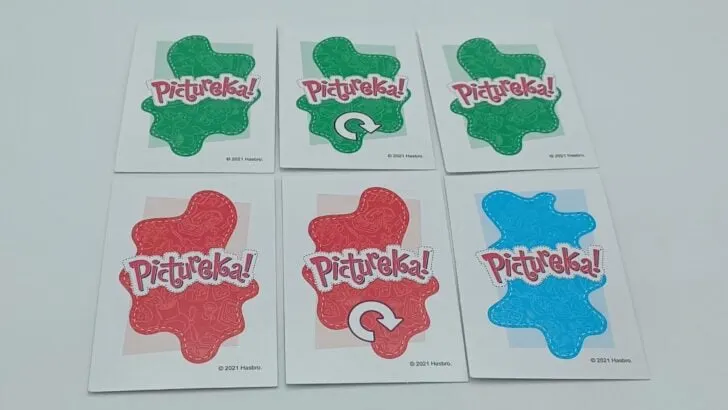
Pictureka! Variant Games
There are a couple of variant rules you can use to change up the gameplay.
If you are playing with young children that can’t read yet, you should only play with the blue cards.
Should you want a shorter game, you can reduce the number of cards that you need to win the game. To make the game longer, you should increase the number of cards you need to collect.
If you want to play in teams, the players should divide into two groups. The gameplay is the same except that all of the players on a team will try to complete the mission together.
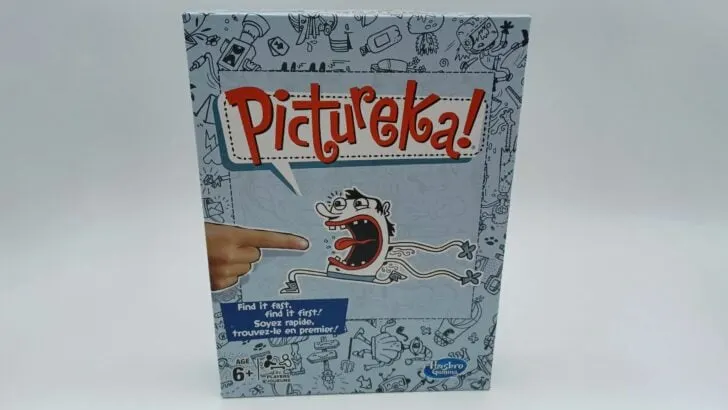
Second Edition Changes
There are two different ways of playing the second edition. You can play following the rules above. Otherwise you could play where you play a few rounds of each mission color before moving onto the next color. If you choose to play this way, whoever has the most cards at the end of the game wins. The recommended number of rounds you should play are as follows:
- 2-3 players – 3 rounds of each color per player
- 4-5 players – 2 rounds of each color per player
- 6+ players – 1 round of each color per player
My Tile (Red Cards)
The red cards are the main area where the second edition differs from other versions of the game.
In this mode each player chooses a tile and places it in front of themselves. If there are four or less players, each player can take two tiles.
You will then read what is on the red card. If there are multiple sections on the card, you will follow the one corresponding to the section of the card you chose to play during setup. After a countdown from three, all of the players flip over their tiles and start searching for a picture that matches what was on the red card. If you can’t find the item on your tile(s), you can flip them to the other side.
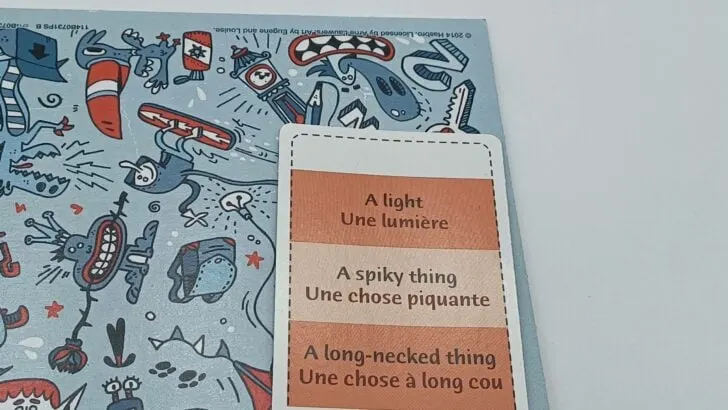
The first player to find a matching object wins the card.
Return all of the tiles to the board in the middle of the table.
Pictureka! FAQs
If you have any questions about how to play the game, leave a comment below on this post. I will try to answer any questions asked as best and as quickly as possible.
What do you do if someone calls out that they found a match, but they didn’t?
Some versions of Pictureka! address this situation and others don’t.
The 2014 version of the game says that the players should come up with their own punishment. You could make them give up one of their cards, or make they do something silly like bark like a dog.
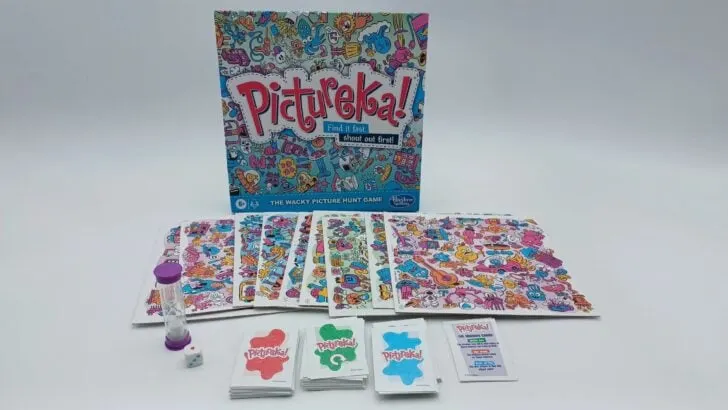
Components
2014 Edition
- 9 Game Tiles
- 35 Blue Cards
- 10 Green Cards
- 10 Red Cards
- Die
- Sand Timer (30 Seconds)
2021 Edition
- 9 Game Tiles
- 35 Green Cards
- 36 Blue Cards
- 35 Red Cards
- 4 Reference Cards
- Die
- Sand Timer
Year: 2006 | Publisher: Hasbro, Parker Brothers | Designer: Glenn D’Hondt, Arne Lauwers, Sylvia Meert | Artist: Glenn D’Hondt, Sylvia Meert
Genres: Family, Speed
Ages: 6+ | Number of Players: 2+ | Length of Game: 30 minutes
Difficulty: Light | Strategy: Light | Luck: Moderate
For more board and card game rules/how to plays, check out our complete alphabetical list of card and board game rules posts.

